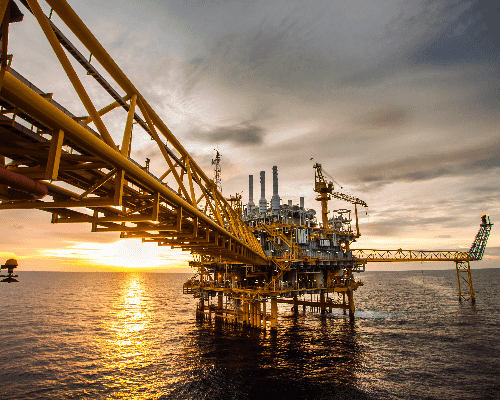
Energy Efficiency Unleashed: The Advantages of Rotary Screw Air Compressors
April 3, 2024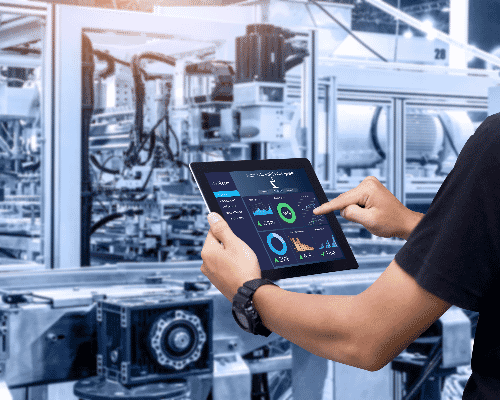
The Future of Energy Efficient Manufacturing: Rotary Screw Air Compressors
April 17, 2024How Variable Speed Drive (VSD) Rotary Screw Air Compressors Save You Money
Kaishan USA | April 10, 2024 | Uncategorized
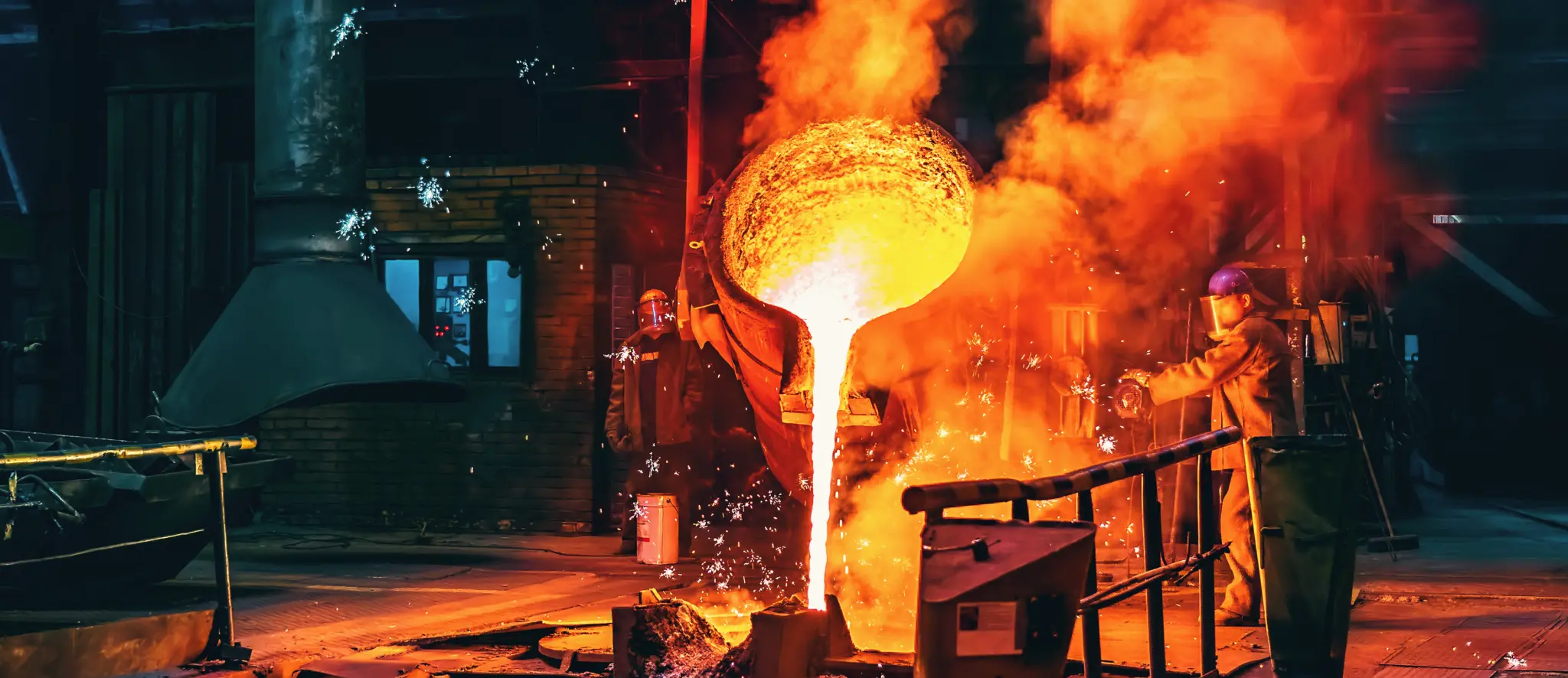
Changes in technology, cost and sensitivity to dust have made VSD compressors beneficial in more applications.
Recent developments in rotary screw air compressors equipped with variable-speed drives have created new opportunities in many different applications.
These updates enable the use of this energy-saving technology:
-
- In high-purity settings like healthcare and medical facilities.
- In uses like metallurgy, mining and oil and gas, where a VSD’s sensitivity to airborne dust and dirt made them problematic.
- And in myriad smaller locations, where the high initial cost kept VSDs from being cost-effective.
We’ll review these advances in a moment. And add a few words of caution about ensuring that VSD compressors are appropriate for your application. But first, a few VSD basics.
Variable-Speed Drive Basics
The application of VSD technology to rotary screw air compressors has enabled many companies to save significant amounts of energy. And cost.
VSDs allow rotary screw compressors to operate more efficiently at part-load conditions. It is almost tailor-made for rotary screw air compressors, which can easily change speeds. You really can’t apply VSD technology to reciprocating air compressors because you can’t adjust speeds the way you can with a rotary screw unit.
Energy savings are not the only benefit. VSD compressors can earn rebates, allow soft starts and offer better control of your compressed air system. And they are an energy-efficient way to address rapid cycling, which occurs when your air compressor switches back into the loaded state before the transition to the no-load state is complete. If that happens too frequently, it can cause increased wear and reduce compressor reliability and lifespan.
VSD Advances
As mentioned, several factors have made VSD air compressors more attractive in some applications. These include advances in air quality, the use of VSD compressors in harsh environments and a reduction in costs.
We’ll start by showing how improvements in air quality addressed challenges in the medical field.
Better Control Produces Better Air Quality
VSDs allow finite control of your compressor, enabling you to calibrate the output to match compressed air demand, enhancing efficiency and performance.
You can also control the pressure more tightly, keeping the pressure band—the gap you set between load pressure and unload pressure—to +/- 1.5 PSIG, according to CAGI.
The critical advance: better control also allows you to produce air of higher quality. Not just a steady flow but a reduction in moisture buildup and the likelihood of contamination during periods of low demand.
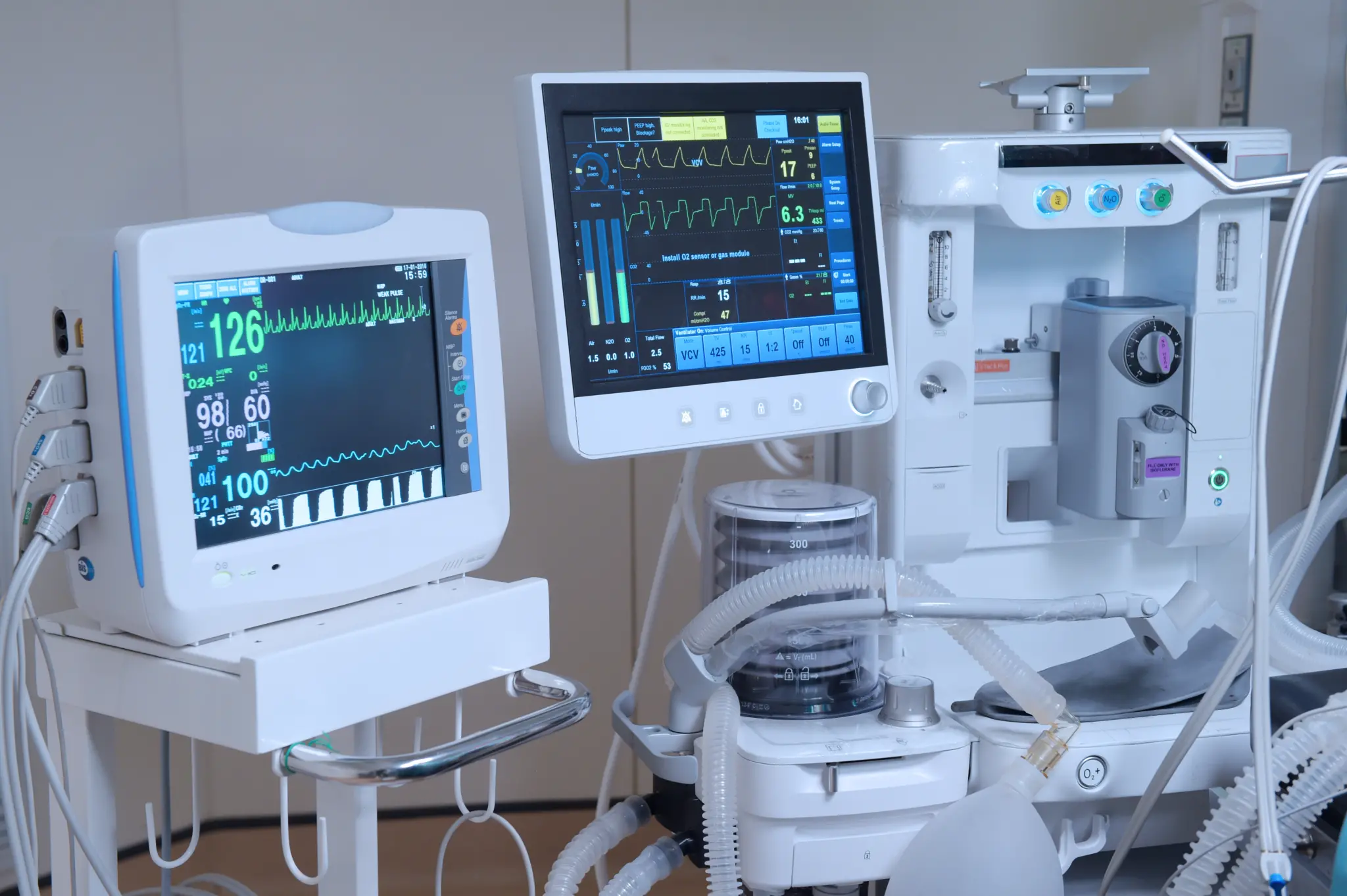
VSD technology enables higher air quality, which is a “must-have” in medical and healthcare applications.
That’s a significant consideration for medical and healthcare facilities, where air quality is paramount.
Unfortunately, there are a few downsides: when a VSD compressor is operating at a lower RPM level, you will have more oil carryover. And air-oil separation is not as effective at lower flows.
The next advance: water-cooled VSD compressors.
Water-Cooled VSD Compressors Make Harsh Environments Safe for VSD Compressors
Until recently, we have not recommended using VSDs in many industrial environments. Especially those where the air was heavy with dust and dirt.
Those airborne contaminants tended to clog the VSD’s heat sink, causing it to overheat. As a result, we did not recommend installing VSDs where the unit would be near a welding operation, for example, which adds conductive material to the ambient air.
Newer, water-cooled VSD drives, however, are now coming on the market and may alleviate some of the problems associated with dust and dirt in the air.
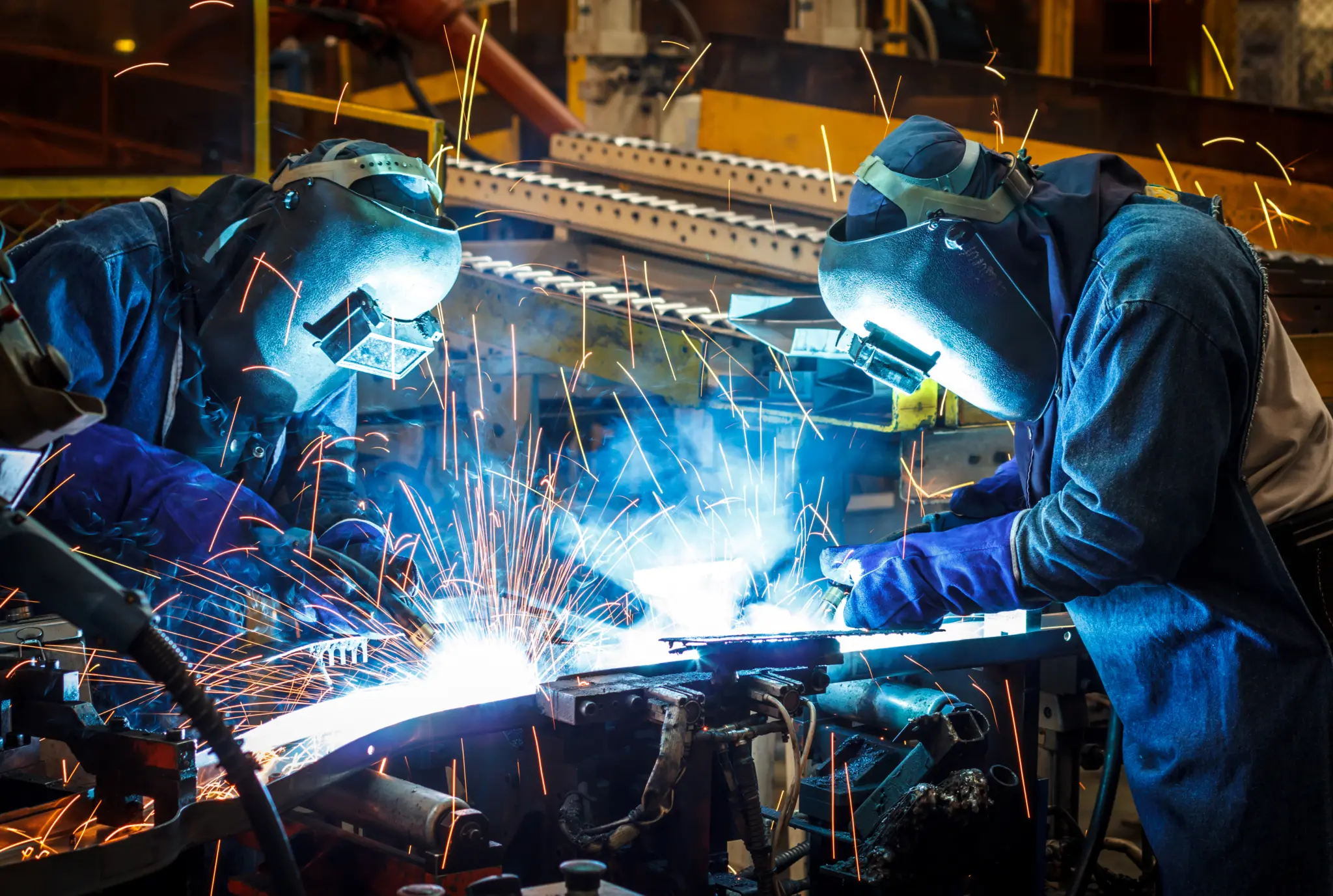
Water cooling of VSD drives may allow VSD compressors to work in a welding operation.
So, while a traditional VSD-driven air compressor can overheat when dust, dirt and airborne contaminants clog the drive’s heat sink and fans, newer VSD drives will quickly remove the heat with a water-cooling system.
There is still a heat exchanger that can get clogged, but it is much easier to clean. The new unit has an intermediary cooling fluid that circulates through a traditional heat exchanger, making it safe to wash or clean.
Finally, the continuing electronics revolution has lowered costs while improving the performance of variable-speed drives.
Lower Costs, Better Performance
Like all other electronic devices, variable-speed drives have dropped in price and increased in performance and functionality since they were introduced in the 1980s. They are smaller, more compact, more durable and easier to set up and operate.
As a result, VSD compressors continue to advance in affordability and cost-effectiveness. Making them attractive in applications that may not have been cost-effective even just a few years ago.
In fact, our VSD-equipped KRSD single-stage, direct-drive rotary screw air compressor is less expensive than any comparably equipped direct-drive compressor on the market.
Not for Everyone
While government bodies and utilities have gone all-in on VSDs, offering attractive rebates and incentives to companies that deploy them, they are not for every application.
In fact, they may cause more problems than they solve for some compressed air users. We have seen many circumstances where a company paid more for a VSD-driven compressor to earn the rebate. But the results were less than satisfactory.
As a result, we’ve become strong advocates for applying VSD technology everywhere that’s appropriate. And more importantly, we’re totally against misapplying VSDs.
Applying—and Misapplying—VSD Compressors
A VSD air compressor will not benefit every company. One good example would be a plant that operates at a low level most of the week but needs more compressed air capacity for two days or less.
We only recommend VSDs when the compressor operates at a load between 30% and 80% of its total capacity most of the time.
But they are not a good choice at the extremes:
-
- High levels. We do not recommend using VSDs when your compressor runs at 100% load most of the time since the drive itself incurs some losses.
- Low levels. We encourage customers not to use a VSD compressor when the machine runs at 20% of its total capacity most of the time. It will run too cold and build up moisture, ruining the machine.
In addition, it is not an easy task to retrofit a VSD to an existing compressor. Compressor manufacturers evaluate the entire system, making sure all the compressor components work in harmony to save energy. Bolting on any VSD to any compressor is not recommended. In fact, you can damage a drive, the motor or the compressor and consume more energy.
The bottom line? VSD technology can actually cost you money if it is not applied appropriately. How? A VSD air compressor has a high initial cost than a fixed-speed compressor. Plus, frequent breakdowns all too often occur when a VSD compressor is not the right choice for the application.
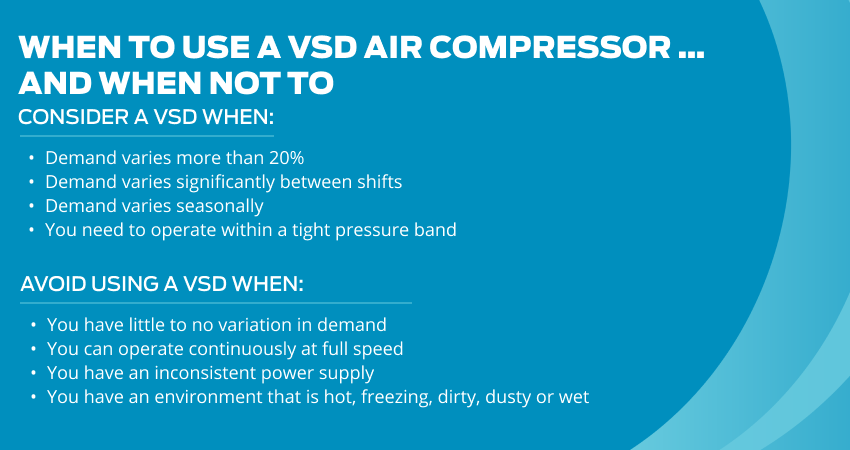
VSD Alternatives
VSDs are not the only way to save energy and reduce the risk of rapid cycling in your compressed air system. Other items in the system designer’s bag of tricks include modulation and system reconfiguration.
Modulation
To combat rapid cycling, we often propose modulation, which adjusts the inlet valve to a partially open position (proportional to system demand), reducing the amount of air entering the inlet. Kaishan incorporates modulation into some models. As mentioned previously, variable-speed drives are a more energy-efficient way to address this issue, but they cost more upfront.
While some experts view modulation as wasting energy, the loss is insignificant compared to the damage done by rapid cycling. So, it may be more cost-effective than VSDs for some users. The key is to balance that potential cost with the negatives of rapid cycling.
System Reconfiguration
Typically, our customers want one machine to meet all their compressed needs. And they want one device to maintain, which seems simpler—or maybe two, with one as a backup.
However, deploying multiple compressors in a network to handle the variations in compressed air demand is usually more reliable and energy-efficient.
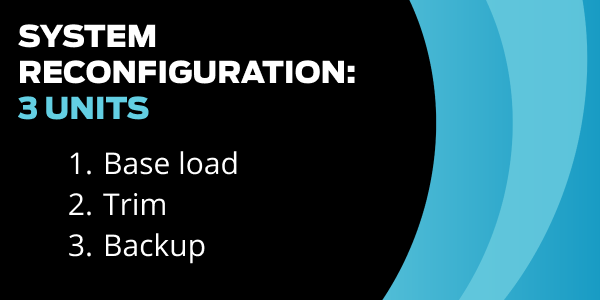
Here’s an example. Typically, we find wide variation in usage, depending on what’s happening in a plant. Suppose you need 1,000 CFM on the first shift, 600 on the second shift, but only 200 for the third. The first two are okay, but the last is a problem, no matter how you do it.
Many manufacturers advocate use of VSDs to operate more efficiently. But, in our view, you're much better off buying three units–one for base loading, one to trim and another one for backup. And rotating the three continuously.
For more on system reconfiguration, see our blog post, “Variable-Speed vs. Fixed-Speed Air Compressors.”

Considering a VSD air compressor? Ask your air compressor professional to conduct an audit.
The Best Place to Start Is with an Audit
If you want to find out whether (and how) a VSD compressor will save you money, we strongly recommend working with an air compressor professional to perform an audit evaluating your operation and its suitability for the use of VSDs. We work with a nationwide network of independent distributors, who can conduct an air audit to determine the most cost-effective approach for your situation. These factory-trained compressed air experts can provide on-site help and consultation. And they have staff members who are skilled in conducting audits and installing and operating rotary screw air compressor technology.
Key Takeaways
-
- Developments in VSD air compressors have created new opportunities in many different applications.
- VSDs help improve air quality, a significant consideration for medical and healthcare facilities.
- Newer, water-cooled VSD drives may alleviate some of the problems associated with airborne dust and dirt.
- The continuing electronics revolution has lowered costs and improved performance, making VSDs beneficial in more applications.
- Alternatives to VSDs include modulation and system reconfiguration.
Let Us Help
A rotary screw air compressor with VSD technology can have a major impact on your energy efficiency. But it’s not a panacea. If you need help deciding whether a VSD compressor will be cost-effective for your application, get in touch with the experts at Kaishan. Contact us today.
Random stat or
customer quote
textXXtext
text

